
Fluoride-Free Toothpaste with Stevia
Many people say that teeth should be brushed with fluoride toothpaste because fluoride is the only way to prevent tooth decay. Is this really true? The answer is simple and short: No. Even though numerous studies prove that fluoride is able to protect teeth from caries to a high degree, there are definitely a variety of other measures that do the same. In addition, the fact that fluoride is safe for the teeth cannot be generalised to the whole body. In short, teeth can be adequately protected without fluoride.

Fluoride-Free toothpaste | Biodent | Terranatura natural cosmetics

Natrue certified toothpaste and natural cosmetics
Should toothpaste contain fluoride or not?
In the meantime, there is hardly any toothpaste without fluoride. Most so-called experts agree that only fluoride can prevent tooth decay. These statements take the decision away from the consumer when buying a toothpaste. This ensures that hardly any fluoride-free toothpastes are available.
Even if there are still a few examples of fluoride-free toothpastes, they are often simply labelled as defective. Product tests such as the one conducted by a well-known test magazine in July 2016 are causing the last alternatives available on the market to disappear.
Toothpastes without fluoride are often without harmful chemicals
In most cases, fluoride-free toothpastes do not contain any harmful additives. However, this is only the case with toothpastes from the natural cosmetics sector. Others contain, for example, sodium lauryl sulphate and triclosan (both substances that irritate the mucous membranes and damage the intestinal flora), PEG derivatives (harmful to the skin) or preservative parabens (hormone-like effect).
In contrast to fluoride, the majority of fluoride-free toothpastes have natural ingredients that protect against caries, but at the same time do not have any overall health-damaging potential.
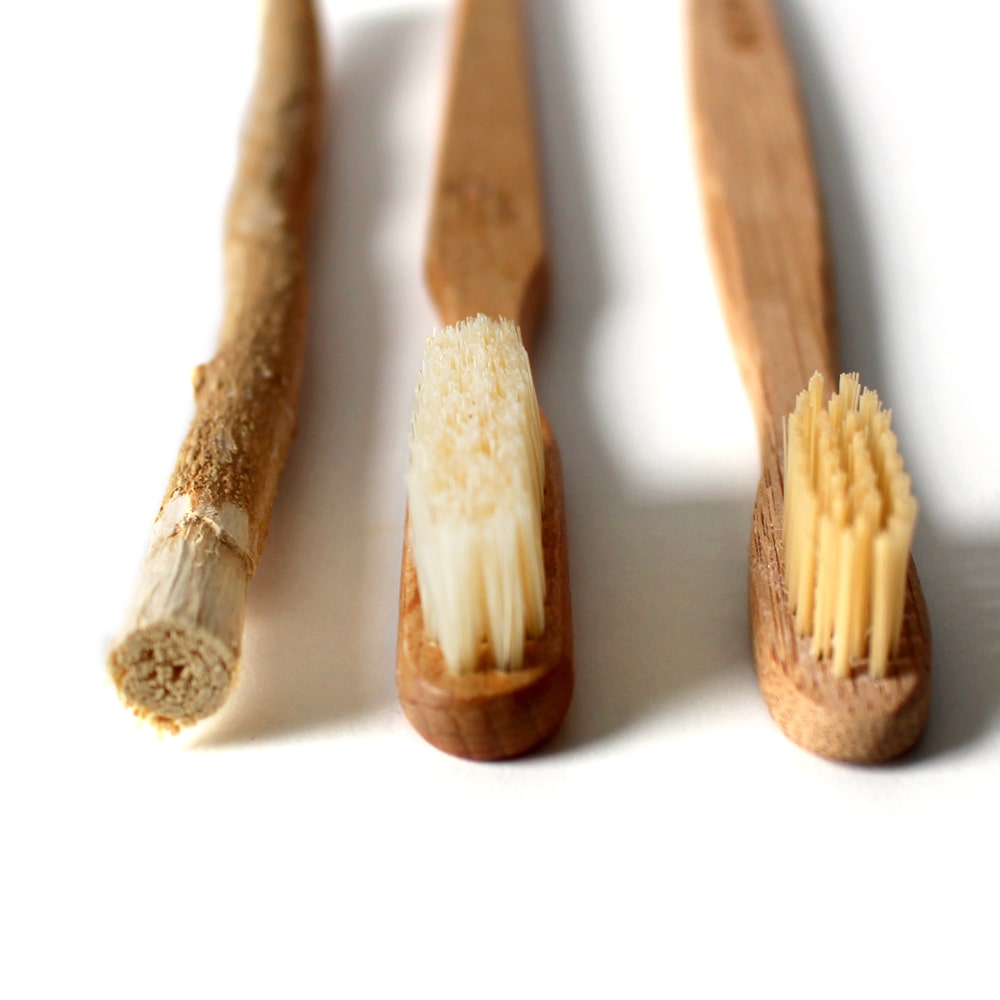
Natural dental care without fluoride – bamboo toothbrushes
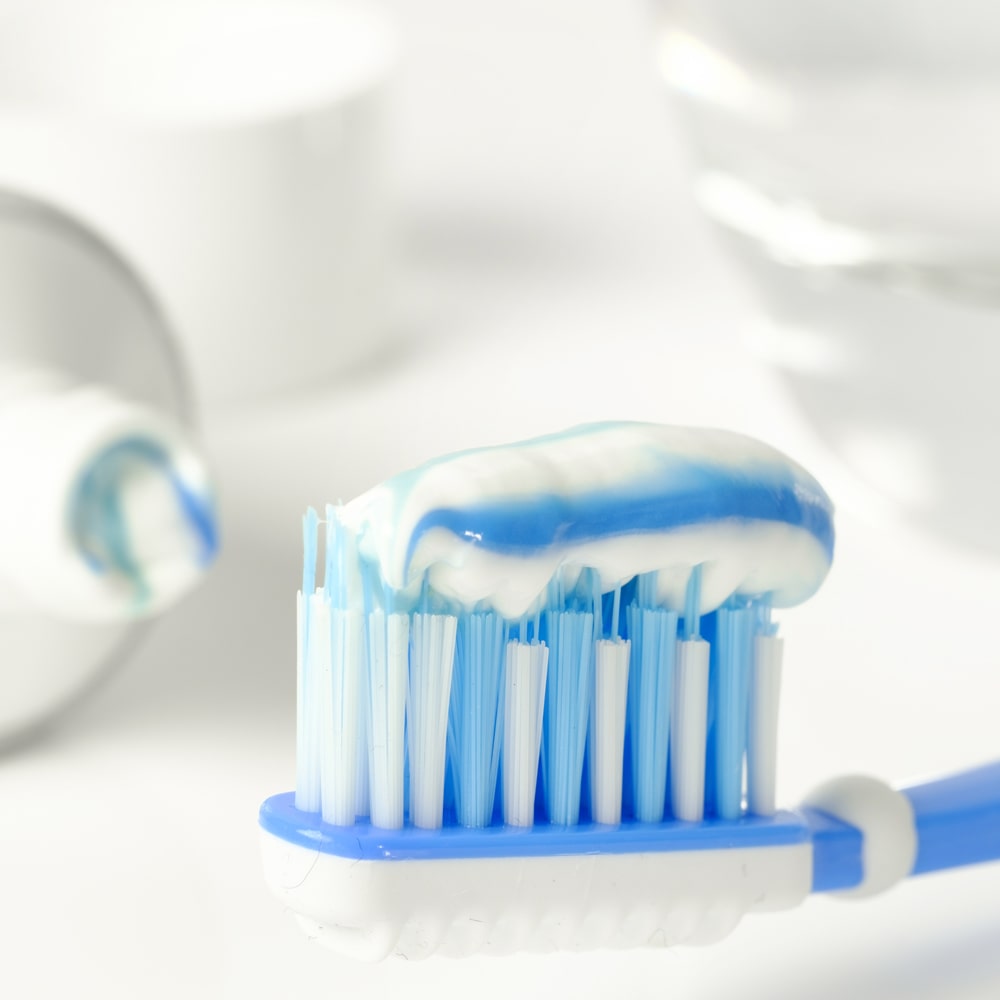
Toothpaste with fluorides and toothbrush
Obviously, however, this advantage did not influence the test results of the products. Often, the fluoride-free alternatives were rated so poorly that one could get the impression that it would even be counterproductive to use them.
The testers were apparently not interested in the fact that fluoride-free toothpastes already meet the wishes of part of the population and that being fluoride-free is actually a characteristic of quality.
Nutritional deficiencies cannot be compensated by fluoridated toothpaste
The usefulness of an initially unhealthy diet and subsequent use of a toothpaste with potentially toxic ingredients is, in our view, very questionable.
Furthermore, when using a toothpaste, it is important not to think exclusively about dental health, but also about the effects on the entire body.
Although a fluoridated toothpaste can protect the teeth, it is rather harmful for the human organism as a whole. Fluorides can accumulate in the entire body and cause additional stress.
The decisive factor for healthy teeth is not the type of toothpaste, but thorough care.
Now, all the information on the subject could give you the impression that there are two possibilities: I eat healthy and use toothpaste without fluoride, or I drink and eat only unhealthy things, but then have to resort to fluoridated toothpaste.

Toothpaste without fluoride | Dental care for beautiful teeth.
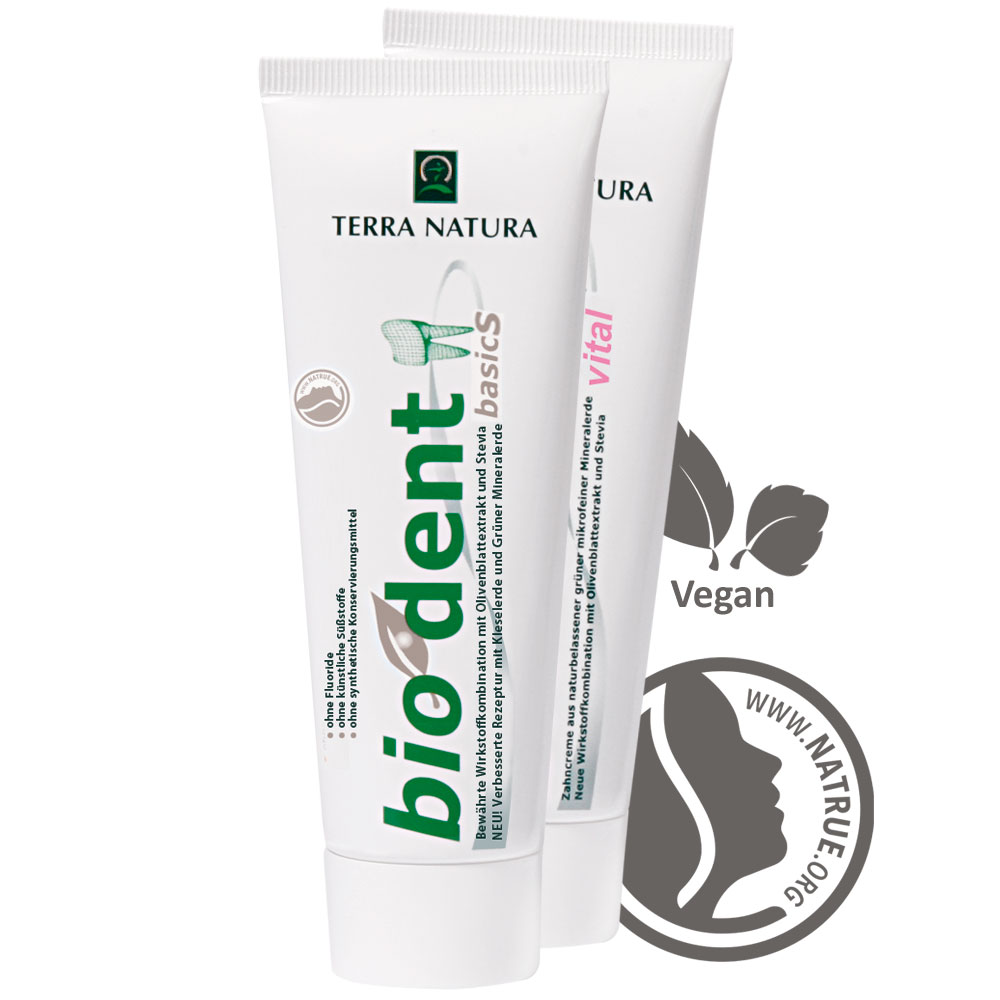
Toothpaste basics and vital | biodent | Terra Natura without fluoride.
That’s not true either. The most important thing for our teeth is that they are brushed thoroughly, whether with or without fluoride. A combination of brushing, mouth washing, flossing, etc. is the best way to prevent tooth decay and other dental diseases. Dentists are of the same opinion.
By the way:
There are a lot of scientific studies that cast doubt on whether the caries protection effect of fluoridated toothpastes is really so unattainable.
Fluoride-free toothpaste has a similar effectiveness to toothpaste with fluoride
The effect of two toothpastes was tested in preschool children in 2007. After five months of brushing, the test showed that the fluoridated toothpaste with neem oil was no more effective against caries bacteria than the alternative toothpaste without fluoride.
On closer analysis, it was found that the toothpaste without fluoride even performed minimally better. The amount of caries bacteria decreased by 90% in the fluoridated group. In the group of children who used fluoride-free toothpaste, it even decreased by 91%. The researchers said that both types of toothpaste are suitable for preventing tooth decay.
Another, somewhat older study by the University of Wales could also not prove any difference in the effectiveness of both types of toothpaste. The study tested the effectiveness of herbal toothpaste and fluoride toothpaste against gingivitis and plaque.
Effectiveness of fluoride toothpaste through toxic disinfectant
In 2015, scientists published the results of another study in the Journal of Pharmaceutical Sciences, which also compared a fluoride toothpaste with a fluoride-free herbal toothpaste. Even though the fluoridated toothpaste was able to convince with a slight superiority in the tests here, the researchers found that the fluoride toothpaste contains triclosan. Triclosan is a chemical disinfectant that has a harmful effect on the human organism. This ingredient alone seems to be largely responsible for the high antimicrobial effect.

Bamboo toothbrushes for natural dental care.
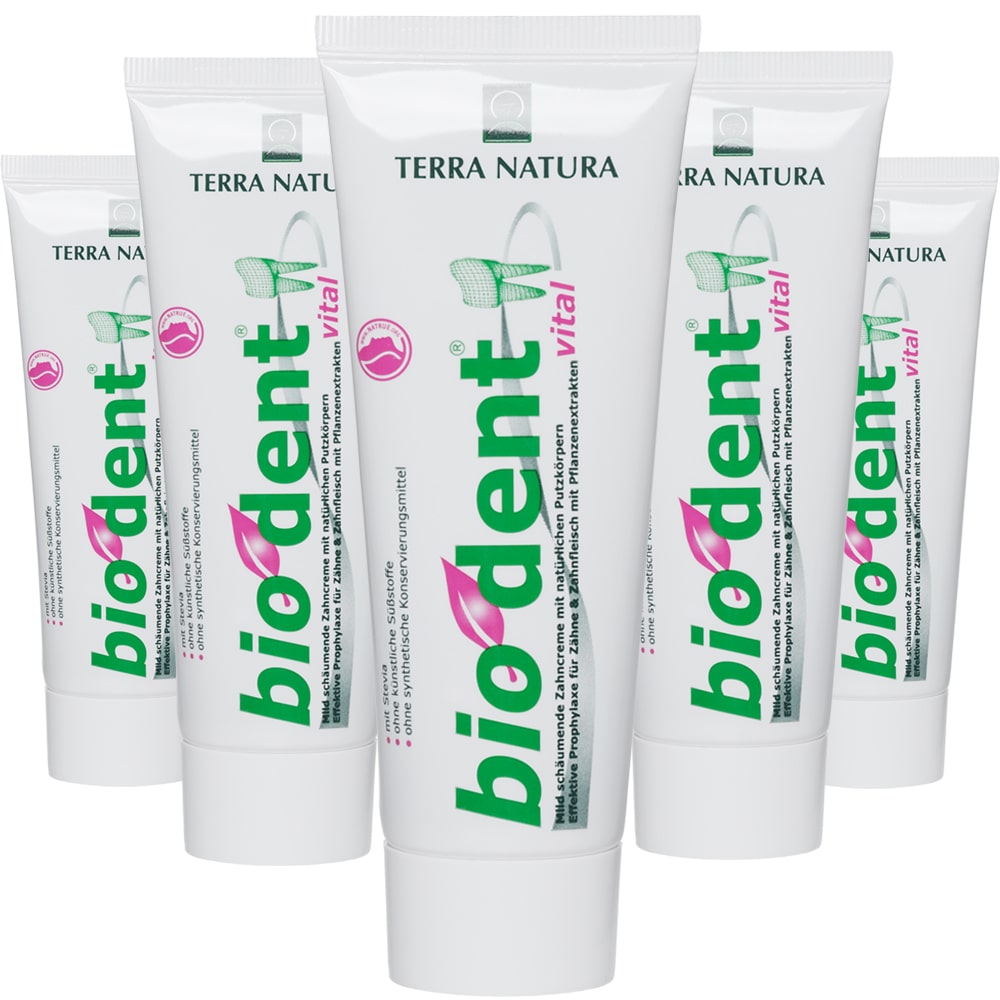
Bamboo toothbrushes for natural dental care.
By the way:
Triclosan has a similar spectrum of action as the disinfectant chlorhexidine, which is used in mouthwashes, for example.
The disinfectants used in many fluoride toothpastes often cause discolouration of the teeth or a dulled sense of taste. These negative aspects seem to be ignored in most cases when evaluating fluoride toothpastes.
Calcium carbonate and fluoride
If you have decided to use fluoride toothpaste, be sure to pay attention to its ingredients. Some toothpastes also contain calcium carbonate. With this combination, it can happen that the two substances combine to form a complex. The effect of fluoride is largely lost in this process.
Credibility of pro-fluoride studies doubtful
The evidence for the caries-protection effect of fluoride toothpastes is in many cases not conclusive. The supposedly so successful drinking water fluoridation is very often and readily cited as evidence. It is often said that in countries where drinking water is fluoridated, there are significantly fewer cancer patients.
In 2015, scientists from the Cochrane Collaboration analysed over 150 studies on this topic and came to a rather sobering conclusion:
The majority of studies were conducted before 1975. The study standards of that time are hardly comparable with those of today. Some studies could not even be used for analysis due to inadequate study designs. About 97 percent of the studies also had an increased risk of systematic errors.
Calcium carbonate and fluoride
If you have decided to use fluoride toothpaste, be sure to pay attention to its ingredients. Some toothpastes also contain calcium carbonate. With this combination, it can happen that the two substances combine to form a complex. The effect of fluoride is largely lost in this process.
The results of the respective studies are therefore only of limited significance. Scientists also agree that in children under six years of age, one has to weigh the risk of fluorosis against caries prevention.
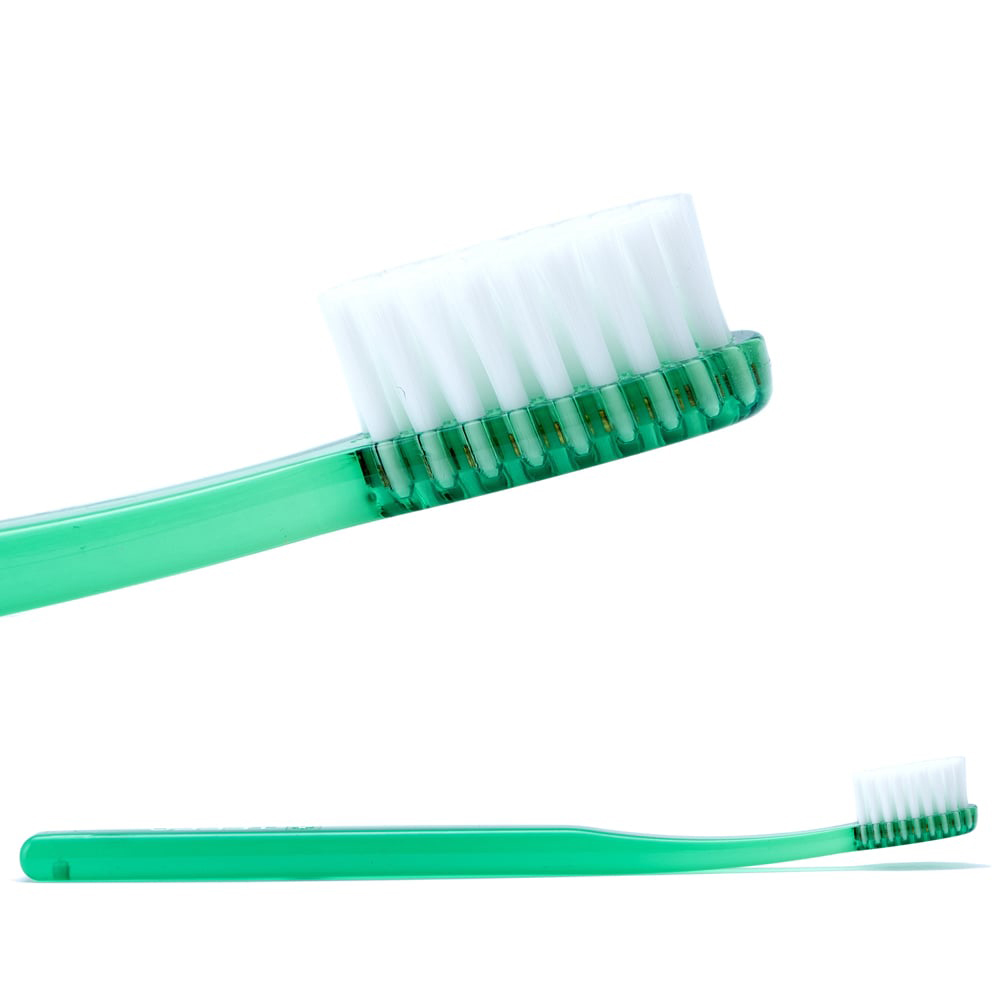
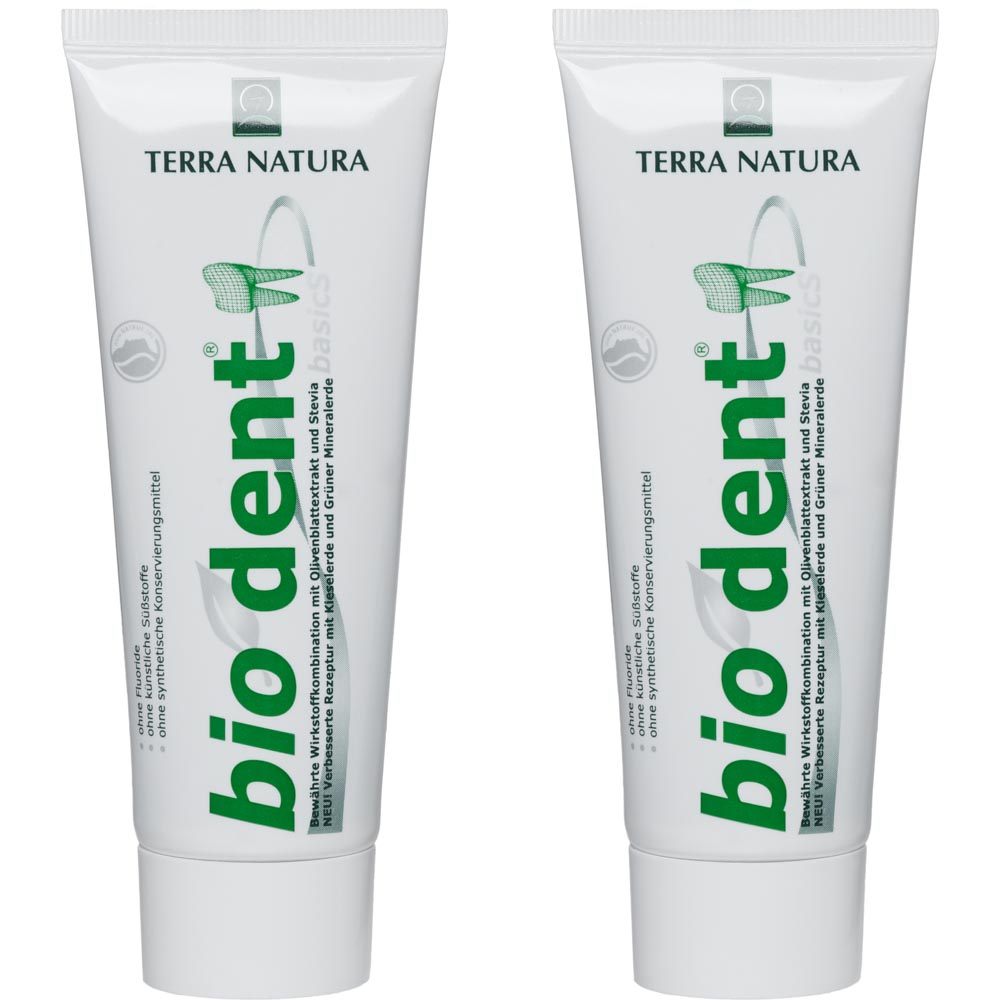
Conclusion: Toothpaste does not have to contain fluoride
It is not necessary to protect your teeth from tooth decay with fluoride toothpaste. A fluoride-free toothpaste protects just as well, provided it is a high-quality toothpaste from the natural cosmetics sector.
A high-quality fluoride-free toothpaste is also an ideal alternative for those who want to avoid the unnecessary and, above all, harmful chemicals of a fluoride toothpaste.
If you can’t find such a fluoride-free toothpaste in your health food shop or drugstore, you can easily make your own, e.g., from coconut oil.
In addition to your daily dental care, we recommend an oil rinse or so-called oil pulling. Oil pulling is an uncomplicated method for daily detoxification. Oil pulling has an extremely positive effect on the health of your teeth and mouth.
Calcium carbonate and fluoride
If you have decided to use fluoride toothpaste, be sure to pay attention to its ingredients. Some toothpastes also contain calcium carbonate. With this combination, it can happen that the two substances combine to form a complex. The effect of fluoride is largely lost in this process.
The results of the respective studies are therefore only of limited significance. Scientists also agree that in children under six years of age, one has to weigh the risk of fluorosis against caries prevention.
References
- Kurian M et al, Effect Of Herbal And Fluoride Toothpaste On Streptococcus Mutans A Comparative Study, Journal of Pharmaceutical Sciences and Research, 2015
- Glenny AM et al., Water fluoridation for the prevention of dental caries. Cochrane Database Syst Rev, Juni 2015
Arambepola S, et al, A comparative study of fluoride content in commercially available fluoridated toothpastes in Sri Lanka, Health and Hygiene, 4. und 5. Juli 2014 - Deshpande R, et al, COMPARATIVE EVALUATION OF ANTIMICROBIAL EFFICACY OF TWO COMMERCIALLY AVAILABLE DENTIFRICES (FLUORIDATED AND HERBAL) AGAINST SALIVARY MICROFLORA, International Journal of Pharmaceutical Sciences, 2014
- Wong MC, Worthington HV et al., Cochrane reviews on the benefits/risks of fluoridetooth pastes. Mai 2011, J Dent Res
- Sudha P, K Venkataraghavan, A Anantharaj, Shankargouda P. Comparison of two commercially available toothpastes on the salivary streptococcus mutans count in urban preschool children – An in vivo study. International Dentistry SA, 2010
- Claydonand N, et al. The use of plaque area and plaque index to measure the effect of fluoride and chlorhexidine toothpastes on 24-h plaque regrowth, Clinical Periodontology, Juli 1995
- Moran J et al, Comparison of an herbal toothpaste with a fluoride toothpaste on plaque and gingivitis., Clinical Preventive Dentistry, 1991 May-Jun;13(3):12-5